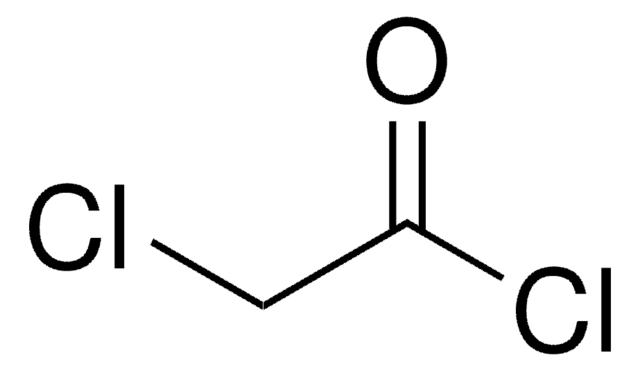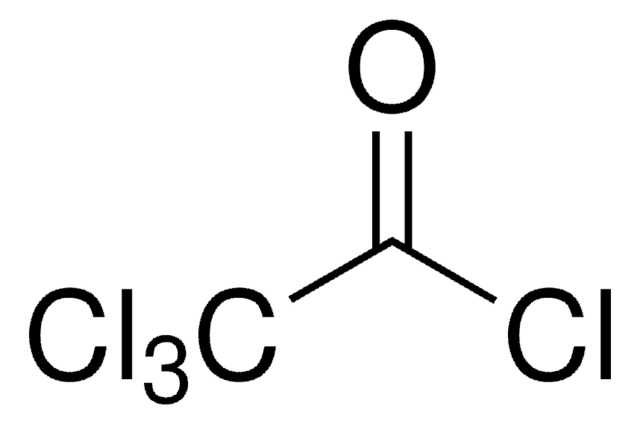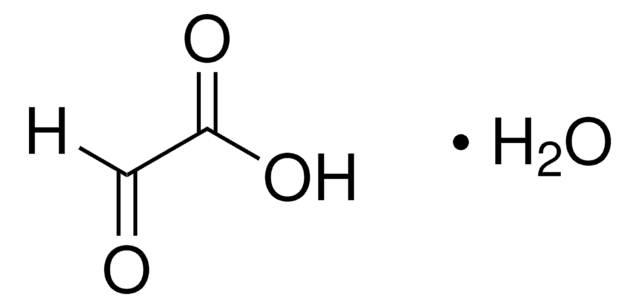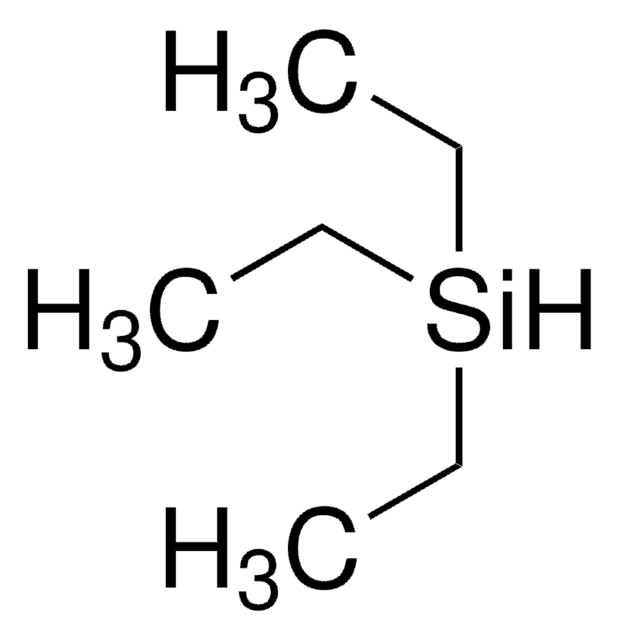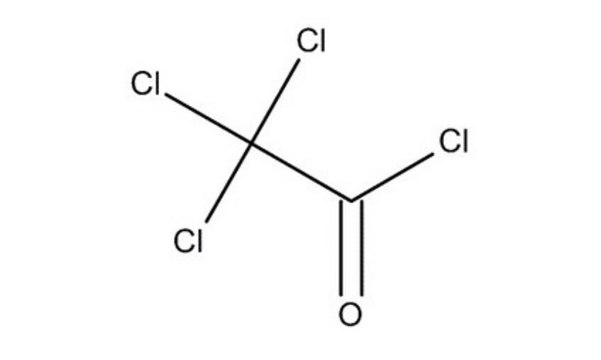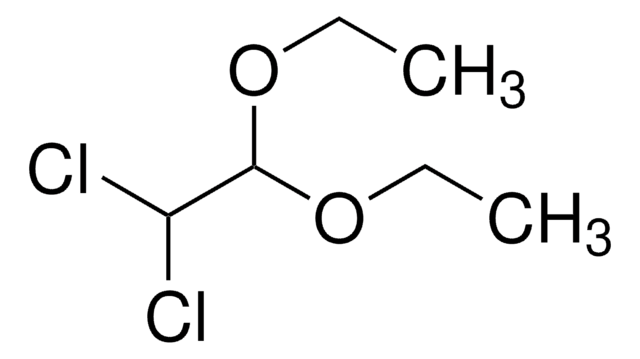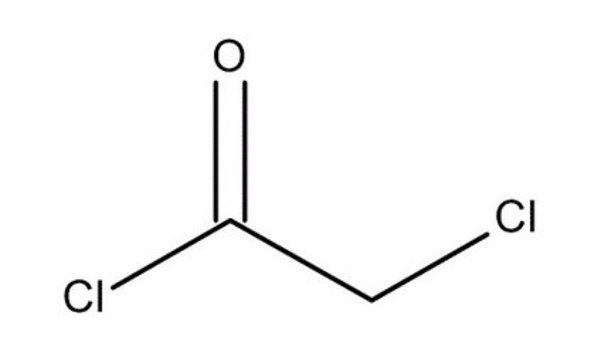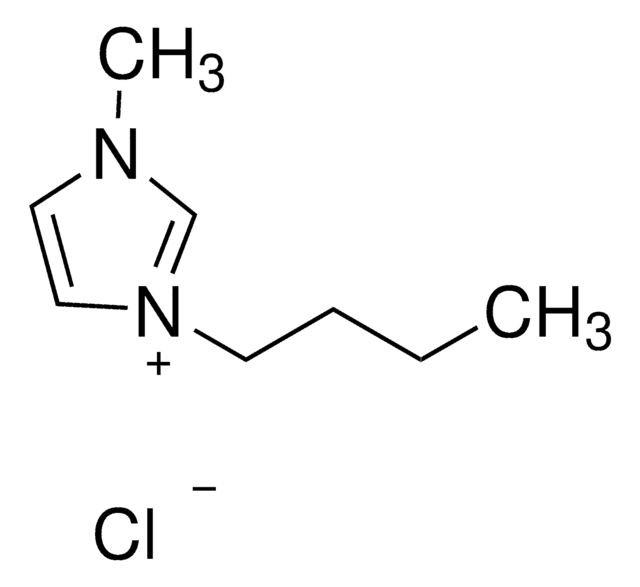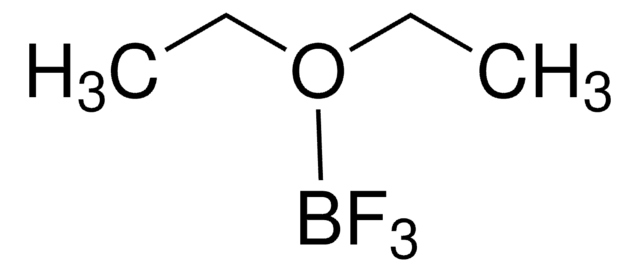推荐产品
质量水平
方案
98%
表单
liquid
折射率
n20/D 1.46 (lit.)
沸点
107-108 °C (lit.)
密度
1.532 g/mL at 25 °C (lit.)
SMILES字符串
ClC(Cl)C(Cl)=O
InChI
1S/C2HCl3O/c3-1(4)2(5)6/h1H
InChI key
FBCCMZVIWNDFMO-UHFFFAOYSA-N
正在寻找类似产品? 访问 产品对比指南
警示用语:
Danger
危险声明
危险分类
Aquatic Acute 1 - Carc. 1B - Eye Dam. 1 - Skin Corr. 1A
补充剂危害
储存分类代码
6.1C - Combustible acute toxic Cat.3 / toxic compounds or compounds which causing chronic effects
WGK
WGK 2
个人防护装备
Faceshields, Gloves, Goggles, type ABEK (EN14387) respirator filter
法规信息
危险化学品
M F Khan et al.
Immunopharmacology and immunotoxicology, 19(2), 265-277 (1997-05-01)
Welders are exposed to dichloroacetyl chloride (DCAC) when trichloroethene (TCE) is used as a degreasing agent. Human exposure to TCE and tetrachloroethane can also lead to formation of DCAC in situ through metabolism. Due to its strong acylating property, it
Rolf König et al.
Chemical research in toxicology, 21(3), 572-582 (2008-02-26)
Dichloroacetyl chloride (DCAC) is a reactive metabolite of trichloroethene (TCE). TCE and its metabolites have been implicated in the induction of organ-specific and systemic autoimmunity, in the acceleration of autoimmune responses, and in the development of liver toxicity and hepatocellular
A R Sellakumar et al.
Journal of the National Cancer Institute, 79(2), 285-289 (1987-08-01)
A series of earlier studies showed that inhalation exposures of rats to three water-reactive electrophilic compounds produced brisk yields of nasal cancer even when the animals were exposed for only 30 days (6 hr/day X 5 day/wk). In addition, carcinogenic
M F Khan et al.
Toxicology and applied pharmacology, 170(2), 88-92 (2001-02-13)
Trichloroethene (TCE) and one of its metabolites dichloroacetyl chloride (DCAC) are known to induce/accelerate autoimmune (AI) response in MRL+/+ mice as evident from anti-nuclear, anti-ssDNA, anti-cardiolipin, and DCAC-specific antibodies in the serum (Khan et al., Toxicol. Appl. Pharmacol. 134, 155-160
Erik N K Cressman et al.
Cardiovascular and interventional radiology (2018-06-07)
Embolotherapies are commonly used for management of primary liver cancer. Explant studies of treated livers, however, reveal an untreated tumor in a high fraction of cases. To improve on this, we propose a new concept referred to as thermoembolization. In
我们的科学家团队拥有各种研究领域经验,包括生命科学、材料科学、化学合成、色谱、分析及许多其他领域.
联系技术服务部门